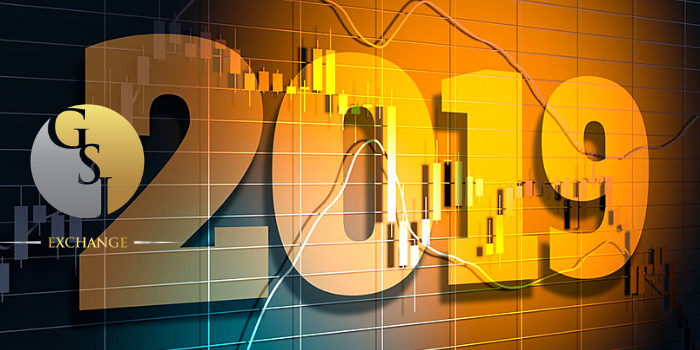
7 Factors That Could Tank Markets in 2019
After a horrible year of stock market volatility, 2018 finally came to a close, its worst performance since the 2008 financial crisis.
Gains in both the S&P 500 and Dow Jones Industrial Average were wiped out by the end of the year.
As we now enter 2019, signals in the broader stock market are flashing yellow to red. The economy seems wobbly. And troublespots abound.
We’ve reached a juncture at which all we can do is keep a close eye on the horizon...and wait. Possibly even begin hedging our money.
Here are seven factors to focus on that can potentially tank the markets.
One - The Leveraged Loan Market
Most investors are not even aware of the full extent to which the leveraged loan markets are threatening the general economy. In fact, most investors might not even know what a “leveraged loan is.
A leveraged loan is a loan issued to corporations that already have outstanding debt, and on top of that, a poor credit history.
Over the last six years, the leveraged loan market has ballooned to a $1.2 Trillion market. $140 billion are being held by retail investors.
Leveraged loans were attractive to investors seeking high yield and floating interest rates (tied to LIBOR) in a low-interest environment.
The problem is that the original investor protections they once held--called “covenants”--are no longer there, as companies shifted toward a “covenant-lite” structure.
To make matters worse, 80% of all leveraged loans today are “covenant-lite,” meaning that the entire leveraged loan market is made up of high-risk assets that can blow up at any time.
The Fed noted this in their September FOMC meeting, stating that leveraged loans may pose as a systemic threat to “financial stability.”
But what can really tank the economy is the fact that these loans are packaged into ETFs, Mutual Funds, and various other instruments.
Financial institutions have turned these high-risk loans into Collateralized Loan Obligations (CLOs), not unlike the Collateralized Debt Obligations that blew up the global financial system in 2008.
Should the leverage loan market collapse, it can spur fund redemptions, fire sales, and a plunge in loan prices that may affect not only investors but the broader economy.
Two - The Unemployment Rate Dipping Below 4%
It’s a sign of a healthy economy when the unemployment rate dips below historically low levels. As of December, the unemployment rate stood at 3.9%.
But looking to the horizon, this is not necessarily a cause for celebration.
Historically, declines in the unemployment rate below 4% often correlate with the highest expansion phase of a market cycle...an expansion that typically ends in a recession.
|
Year |
Unemployment Rate |
Following Cycle |
|
1929 |
3.2% |
Great Depression 1930 |
|
1943-1944 |
1.9% and 1.2% |
Recession in 1945 |
|
1947 |
3.9% |
Recession in 1949 |
|
1952 |
2.7% |
Recession in 1954 |
|
1966-1969 |
3.62% average |
Recession in 1970 |
|
2000 |
3.9% |
Recession in 2001 |
|
2018 |
3.9% |
??? |
Looking toward the future, with the December unemployment rate behind us, its dip below 4%, though a good sign for the economy, may also signal the end of a boom and the beginning of a bust. Overall, it’s a bad omen.
Three - The Hidden Risks of Increasing Wage Growth
The good news is that average hourly wage, now 3.2% higher than last year, is outpacing inflation (2.2%). That’s a reason for cautious optimism.
Employers are trying to fill jobs, and the record number of openings are prompting companies to offer pay rates that are slightly higher than those in years past.
In fact, 25% of small businesses in the US are raising compensation. We haven’t seen anything like that since 1989.
But this optimistic trend toward higher wage growth is sensitive to a number of factors: a volatile financial market (a highly likely prospect), a slowing global economy, and any uncertainty concerning Fed policy can prompt employers to be more cautious about raising wages.
Not only is wage growth sensitive to these factors, but these very factors are also what’s been roiling the markets over the past few months.
Four - The Fed’s Balance Sheet Unwinding
The Federal Reserve is currently straddling two positions.
On one hand, it wants to be flexible and sensitive to the markets. On the other hand, the Fed is trying to dump Trillions from its balance sheet, $50 Billion per month.
What’s the rush? Take a look at the Effective Fed Funds rate in the image below.

Image source: Real Investment Advice
Do you see the dilemma?
If the Fed continues to hike rates, chances are that the markets will plunge.
But unless the Fed continues hiking rates, should the markets plunge and the economy go into recession, the Fed will have no room to adequately stimulate the markets.
Five - Rising Mortgage Rates
The housing market is beginning to slump. Naturally, rising mortgage rates are driving this decline in sales.
As you know, rising house prices encourage consumer spending, which helps boost economic growth. Likewise, a drop in house prices affects consumer sentiment and construction, leading to lower economic growth.
However, typical as this interpretation may be, it is a factor that ought to be monitored, as its effects are currently unfolding in the housing market.
Six - China and Slowing Global Growth
The World Bank forecasts a slowdown in global economic growth as the world’s central banks shift from a loose to tighter monetary policy.
The US-China trade war is only making this transition worse.
No doubt, decreased demand in China may tank US companies whose revenues rely on Chinese buyers, companies like Apple, Inc. Other companies may soon follow.
Right now, the US and China have set a March deadline to come up with a deal to help minimize their trade disputes.
If they fail, the consequences can be disastrous for US businesses, Chinese businesses, and in turn, the global economy throughout 2019.
SEVEN - Too-Big-To-Fail Companies
Remember the “Too-Big-To-Fail” (TBTF) banks that Americans ended up bailing out during the financial crisis of 2008?
Well now, we have a number of TBTF corporations.
For instance, economists are closely watching to see how a number of large tech companies are responding to global market uncertainties, criticisms regarding cybersecurity breaches, and geopolitical concerns (e.g. foreign political interference on social media).
These tech companies, namely Facebook, Google, Apple, and Amazon are massive players in the US economy.
With Democrats now in control of the House, how might their push toward greater regulations on data privacy, antitrust enforcement, and tech’s impact on matters political (such as elections) affect these TBTF companies?
Although these companies have no choice other than to play ball with Congress, government intervention and over-regulation can only bring uncertainty into the markets, which can have serious negative consequences for the economy.











